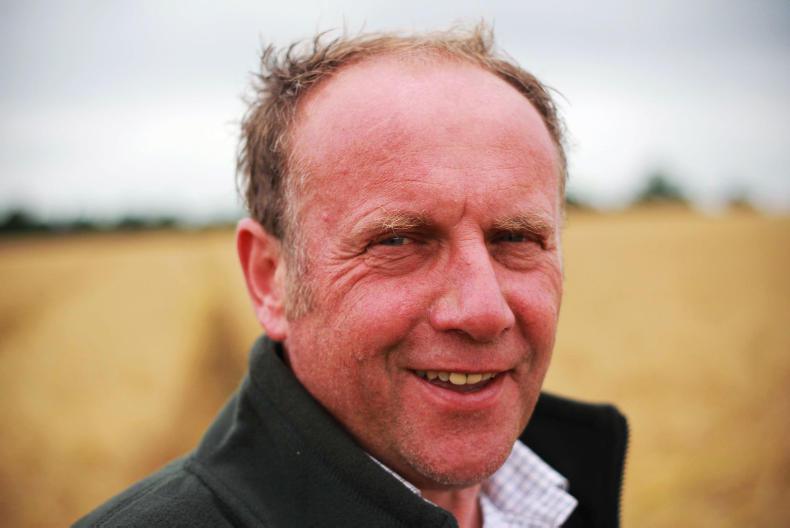As I’ll be 40 years farming this year, I thought I’d bring you on a trip down memory lane to the spring of 1981. Farming was such fun in those days.
A fine March morning would have busily begun with manually lifting the day’s seed barley requirement of Goldspear, Triumph or Koru on to a trailer, all in hundredweight (50kg) hessian sacks. Pallets didn’t exist or at least we hadn’t any way of handling them.
With the seed loaded, the fertiliser for combine drilling was next for handballing with two bags of Albatros 18-6-12 fertiliser for every bag of seed.
The turntable trailer, piled high with enough seed and fertiliser for a good day’s work (about 30 acres), would be pulled out to the field with the Ford 5000. Maybe, if you were in a rush, she’d give a lurch on a bumpy track and the whole shaggin’ lot would be on the ground.
This was a new purchase and was a godsend after the wretched 15ft Vicon power harrow
Whether or which, by this stage the 2WD dual-wheeled Ursus 1201 would be bellowing up and down ploughing in clouds of dust with the mighty 22ft Doublet Record spring tine harrow behind. This was a new purchase and was a godsend after the wretched 15ft Vicon power harrow, which we had for a number of years previous.
We’d recently gone to see a demo of Bernard Eiver’s massive white US-built Case 2290 roaring with one of these wide, acre-eating harrows at about 15mph in a dust storm and we thought we were in the American midwest. It is, in fact, the closest I’ve ever gotten to the midwest.
Boy, did I want one of those rollers
The driver, Larry, was even wearing a Case baseball cap. Nobody had a baseball back cap then bar the legendary farmer and columnist Peter Hepworth who sported a MF one in a Vaderstad roller advert in Power Farming magazine. Boy, did I want one of those rollers.
But I’ve digressed. Back to the cursed Vicon which was a reciprocating harrow (with a wishbone and flywheel like the Vicon fertiliser spreader) and a complete disaster. Rocks would break it in the middle. Then it would be a mad rush off to the local welder man, Tom Kiernan, only to find a queue and Rickards in front of me with a bent Massey drill drawbar in absolute sh*te.
I’d have to humour Tom to do a quick repair and then race back to the field, a good half day later. Bruno was working in RTÉ at that time – at groundworks.
I’d calibrate the drill but this was far from an exact science
After two passes of the Doublet Record – three where there was scutch – the field would be ready for the drill man. That was me so it was out with either the Ford 7600 or preferably the Fiat 780 and the MF 30 drill. But first I’d have to nip off to fetch the swingover chain harrow for behind the drill.
I’d calibrate the drill but this was far from an exact science. I’d set the big ignorant quadrant lever at seven and, clocking the area, frustratingly run the seed hopper out.
Then it’d be a skelp of a hammer to fine tune the seed rate. But if I’d set it for 11 stone/ac, and counting the bags when the field was finished, I’d have to settle for plus or minus a stone, at best.
By about nine o’clock, and after manhandling eight tonnes of bags, I’d have had enough
Come the evening, I’d run the drill right out of fertiliser because sweaty (or lumpy) fertiliser left overnight was a disaster in the making (still is). By about nine o’clock, and after manhandling eight tonnes of bags, I’d have had enough.
The good old days? Not a chance, don’t believe it. And – with no TAMS then – I had to wait nine years for a ring roller.






 This is a subscriber-only article
This is a subscriber-only article










SHARING OPTIONS: